Abstract
Amino acid assimilation and electron transport system activity of a marine Pseudomonas sp. was evaluated to determine whether the activity of bacteria attached to solid surfaces differed from that of free-living bacteria or bacteria which had been attached but subsequently desorbed from the substratum (detached bacteria). Bacteria were allowed to attach to glass and to a range of plastic surfaces (Thermanox, polyvinylidene fluoride, polyethylene, polytetrafluoroethylene). Microautoradiography and staining with a tetrazolium salt to demonstrate electron transport system activity were used to compare the activity of these organisms with that of free-living or detached cells. The water-wettability of the surfaces was evaluated by measuring the advancing contact angle (θA) of water on each surface, to determine whether there was a relationship between activity and substratum hydrophilicity. There was an increase in the proportion of leucine-assimilating attached bacteria and in the proportion of attached cells demonstrating electron transport system activity with an increase in substratum θA, but the relationship between activity of attached and free-living cells depended on the substratum. Activity appeared to promote firm attachment, and detached bacteria assimilated fewer amino acids than did attached cells. There was no general effect of surfaces on attached bacterial activity, and attached cells may be more, or less, active than free-living cells, depending on the amino acid, its concentration, and substratum properties.
Full text
PDF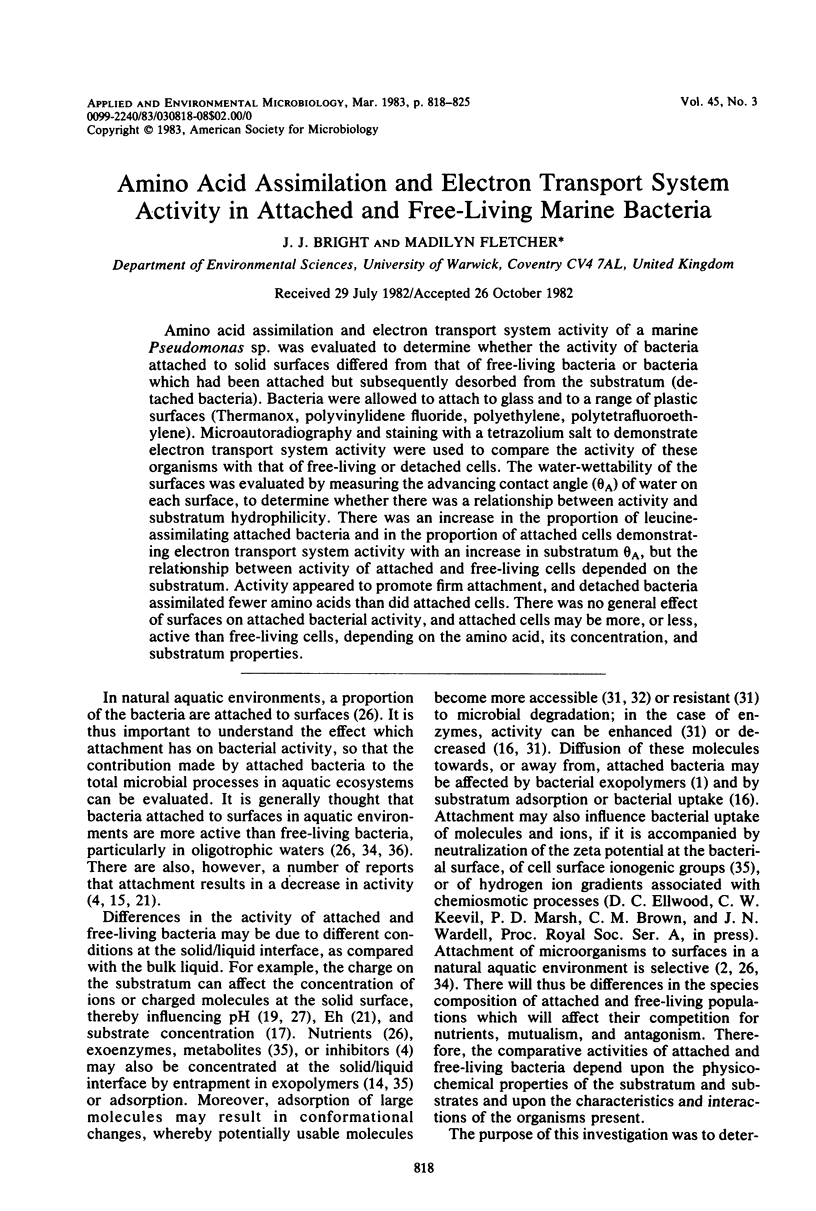
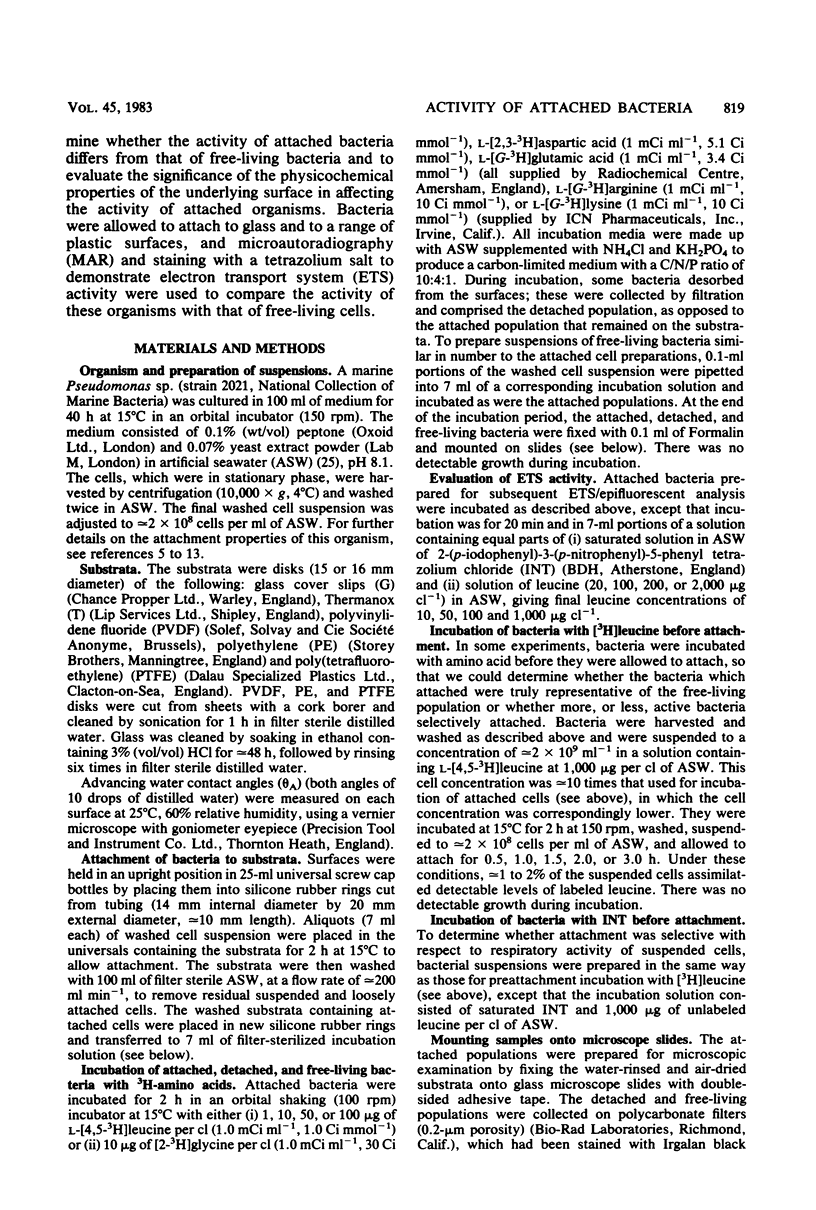
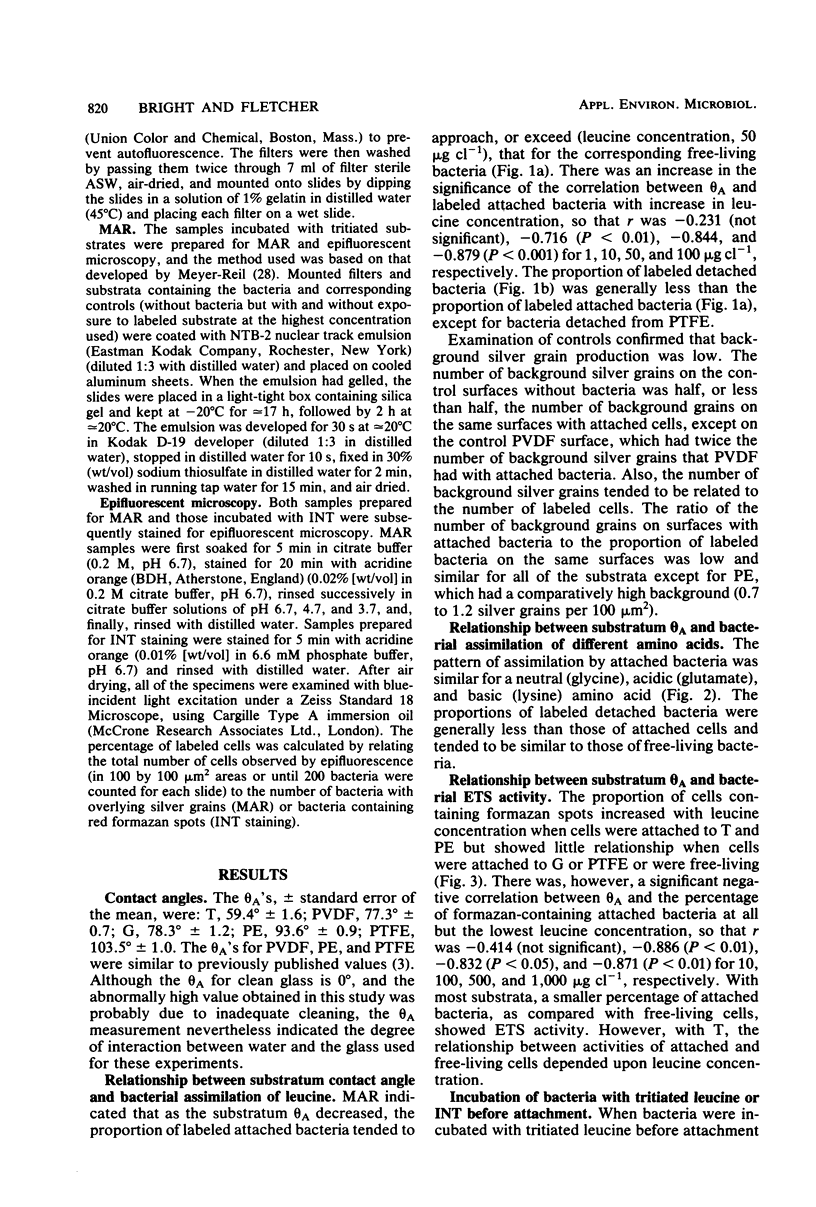
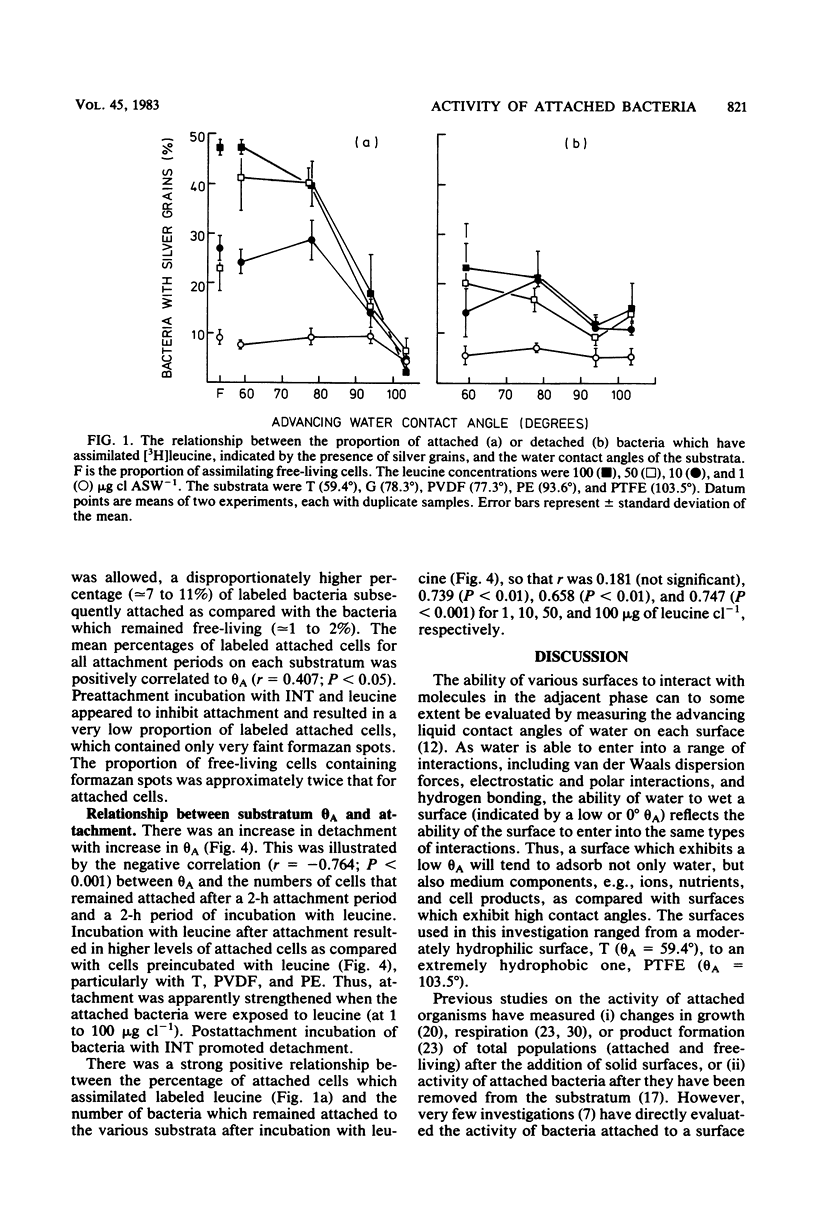
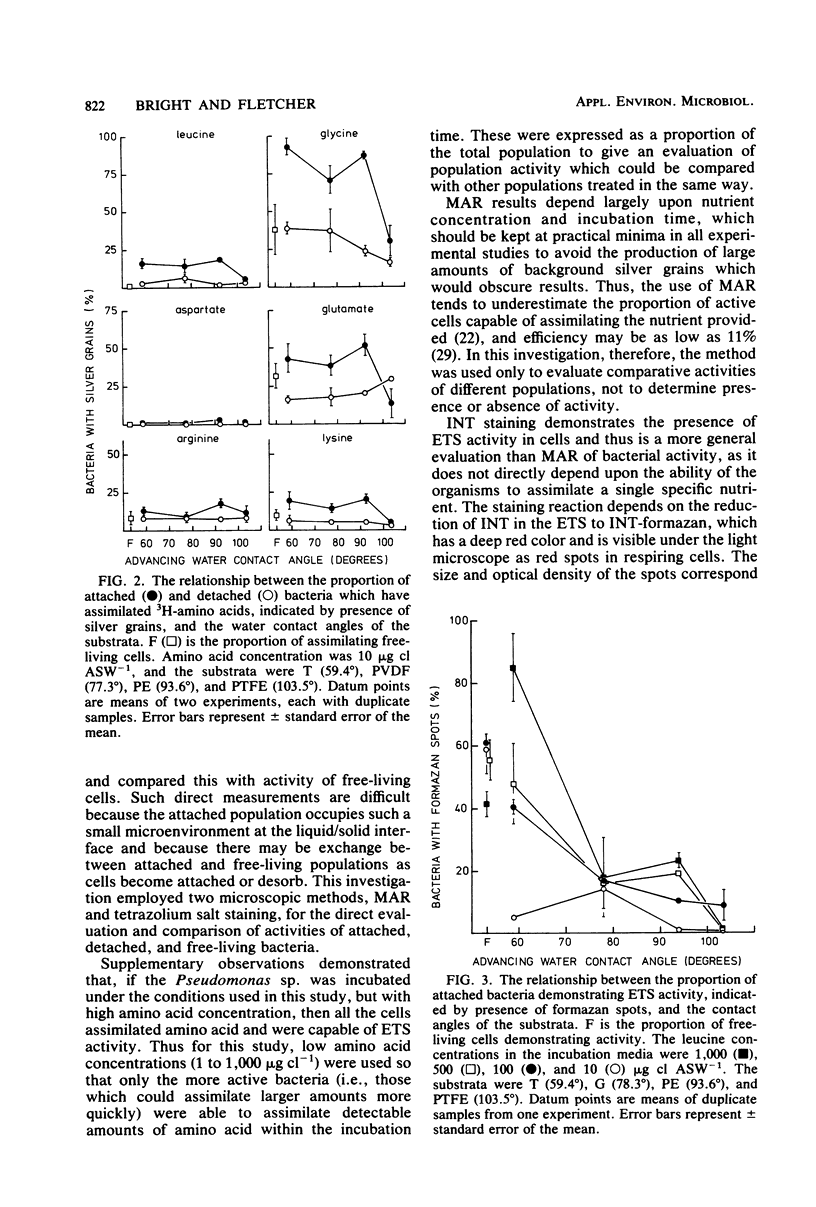
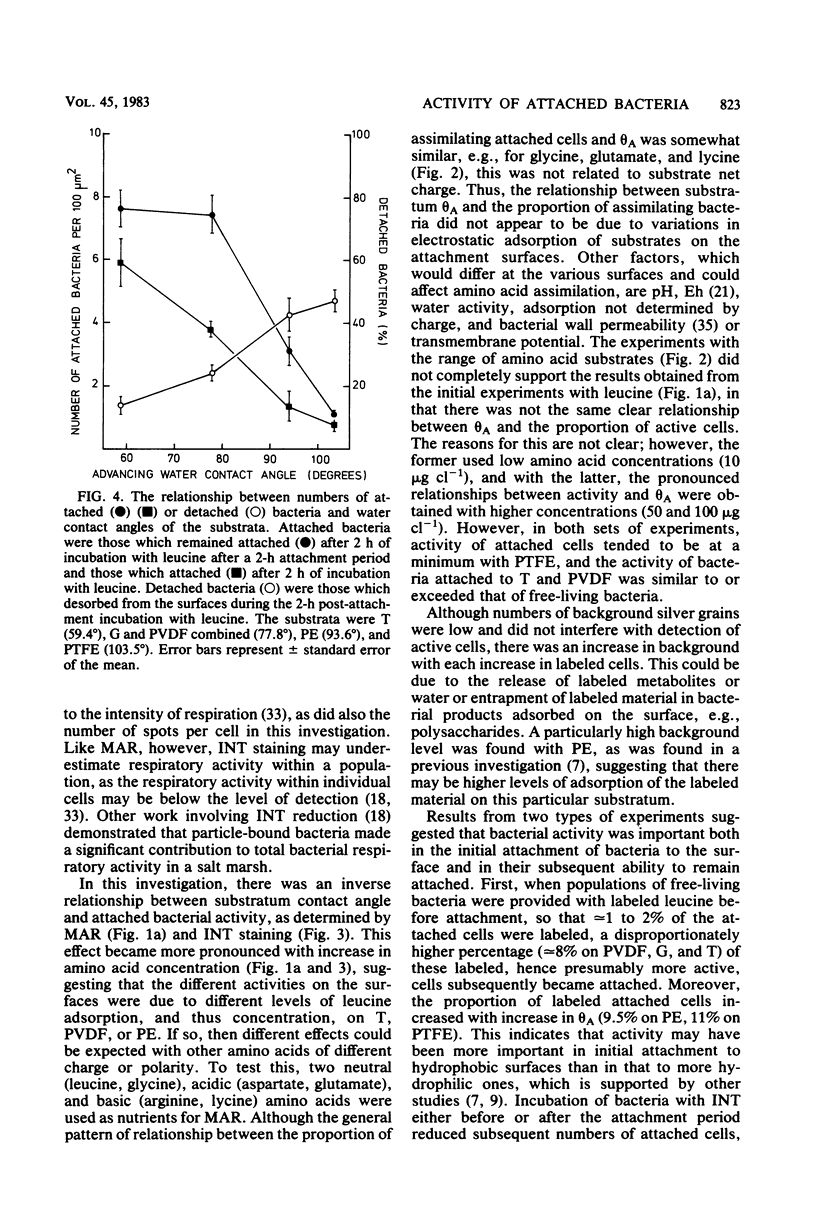
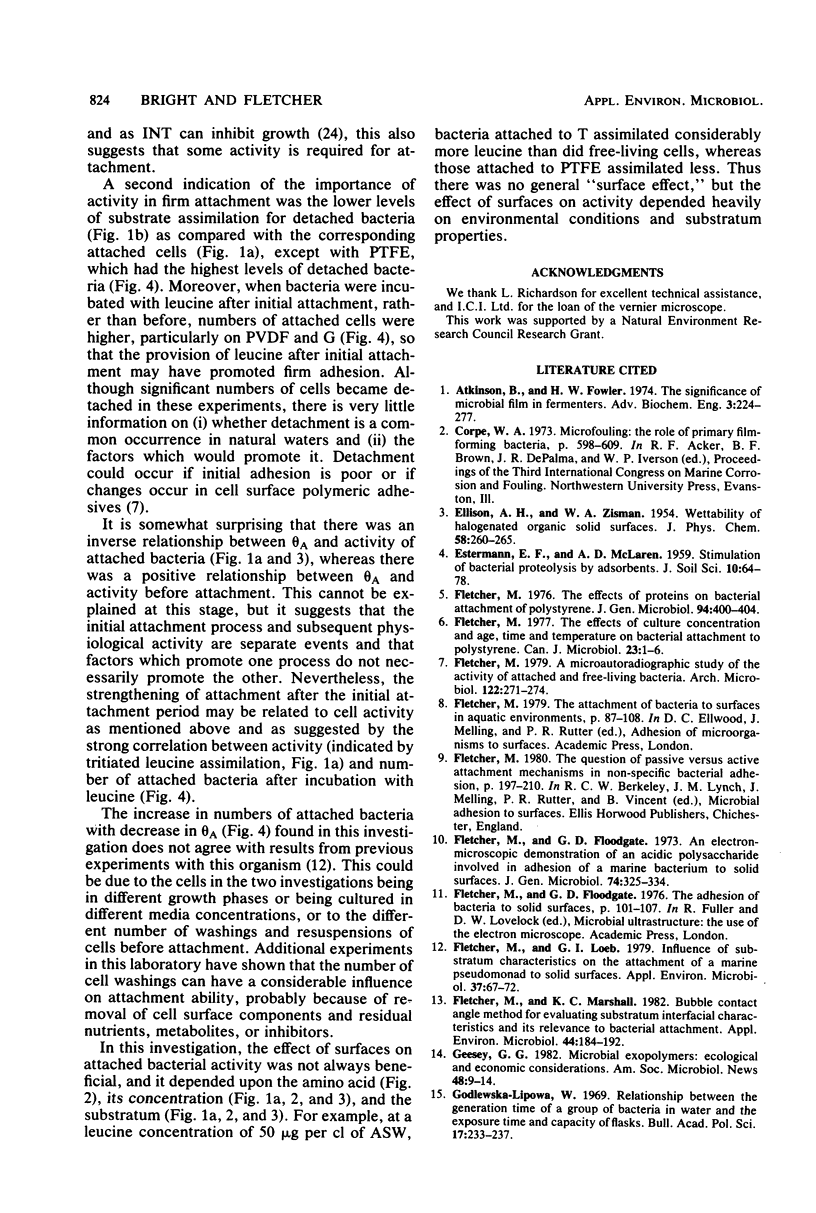
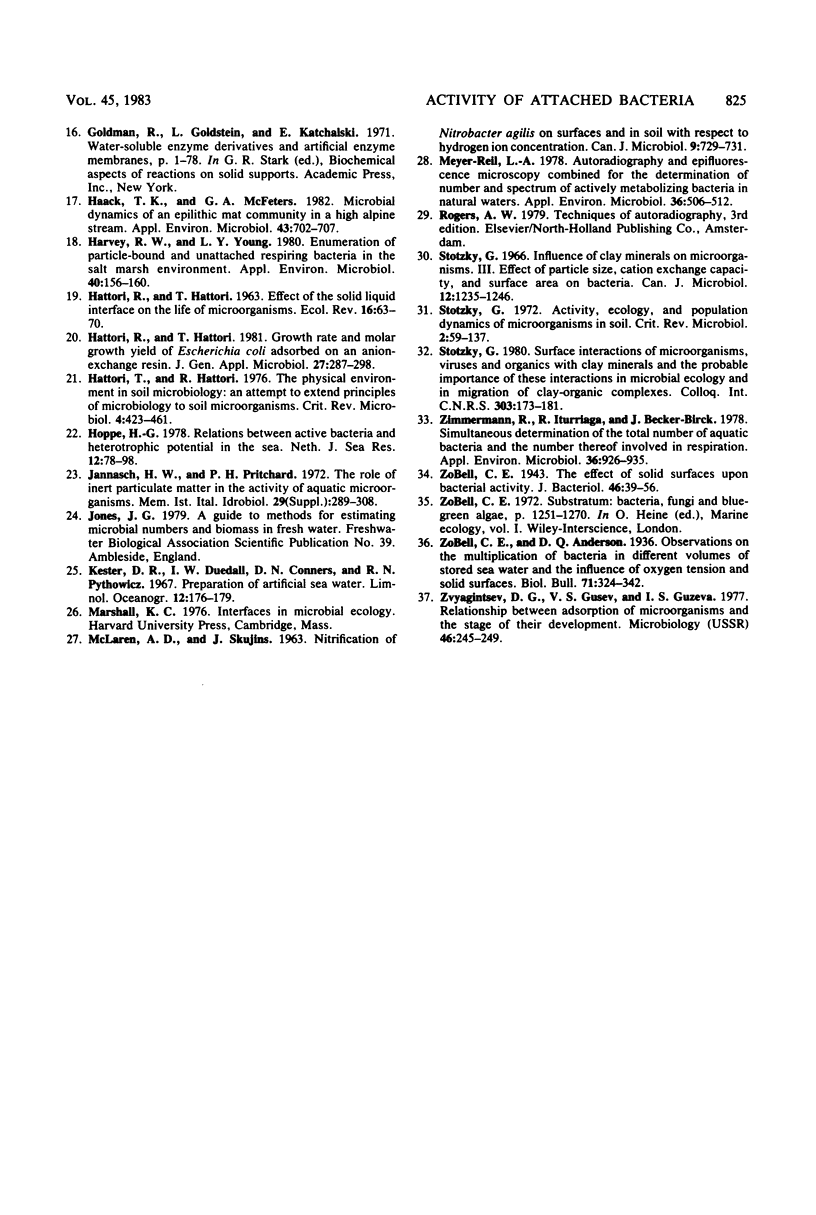
Selected References
These references are in PubMed. This may not be the complete list of references from this article.
- Fletcher M., Loeb G. I. Influence of substratum characteristics on the attachment of a marine pseudomonad to solid surfaces. Appl Environ Microbiol. 1979 Jan;37(1):67–72. doi: 10.1128/aem.37.1.67-72.1979. [DOI] [PMC free article] [PubMed] [Google Scholar]
- Fletcher M., Marshall K. C. Bubble contact angle method for evaluating substratum interfacial characteristics and its relevance to bacterial attachment. Appl Environ Microbiol. 1982 Jul;44(1):184–192. doi: 10.1128/aem.44.1.184-192.1982. [DOI] [PMC free article] [PubMed] [Google Scholar]
- Fletcher M. The effects of proteins on bacterial attachment to polystyrene. J Gen Microbiol. 1976 Jun;94(2):400–404. doi: 10.1099/00221287-94-2-400. [DOI] [PubMed] [Google Scholar]
- Haack T. K., McFeters G. A. Microbial dynamics of an epilithic mat community in a high alpine stream. Appl Environ Microbiol. 1982 Mar;43(3):702–707. doi: 10.1128/aem.43.3.702-707.1982. [DOI] [PMC free article] [PubMed] [Google Scholar]
- Harvey R. W., Young L. Y. Enumeration of particle-bound and unattached respiring bacteria in the salt marsh environment. Appl Environ Microbiol. 1980 Jul;40(1):156–160. doi: 10.1128/aem.40.1.156-160.1980. [DOI] [PMC free article] [PubMed] [Google Scholar]
- Hattori T., Hattori R. The physical environment in soil microbiology: an attempt to extend principles of microbiology to soil microoganisms. CRC Crit Rev Microbiol. 1976 May;4(4):423–461. doi: 10.3109/10408417609102305. [DOI] [PubMed] [Google Scholar]
- Meyer-Reil L. A. Autoradiography and epifluorescence microscopy combined for the determination of number and spectrum of actively metabolizing bacteria in natural water. Appl Environ Microbiol. 1978 Sep;36(3):506–512. doi: 10.1128/aem.36.3.506-512.1978. [DOI] [PMC free article] [PubMed] [Google Scholar]
- Stotzky G. Activity, ecology, and population dynamics of microorganisms in soil. CRC Crit Rev Microbiol. 1972 Nov;2(1):59–137. doi: 10.3109/10408417209108383. [DOI] [PubMed] [Google Scholar]
- Stotzky G. Influence of clay minerals on microorganisms. 3. Effect of particle size, cation exchange capacity, and surface area on bacteria. Can J Microbiol. 1966 Dec;12(6):1235–1246. doi: 10.1139/m66-165. [DOI] [PubMed] [Google Scholar]
- Zimmermann R., Iturriaga R., Becker-Birck J. Simultaneous determination of the total number of aquatic bacteria and the number thereof involved in respiration. Appl Environ Microbiol. 1978 Dec;36(6):926–935. doi: 10.1128/aem.36.6.926-935.1978. [DOI] [PMC free article] [PubMed] [Google Scholar]
- Zobell C. E. The Effect of Solid Surfaces upon Bacterial Activity. J Bacteriol. 1943 Jul;46(1):39–56. doi: 10.1128/jb.46.1.39-56.1943. [DOI] [PMC free article] [PubMed] [Google Scholar]


